The Beautifully Strange Photography of Roger Ballen
A retrospective exhibit includes 55 works and the artist’s video collaboration with South Africa’s hip-hop-rave duo Die Antwoord
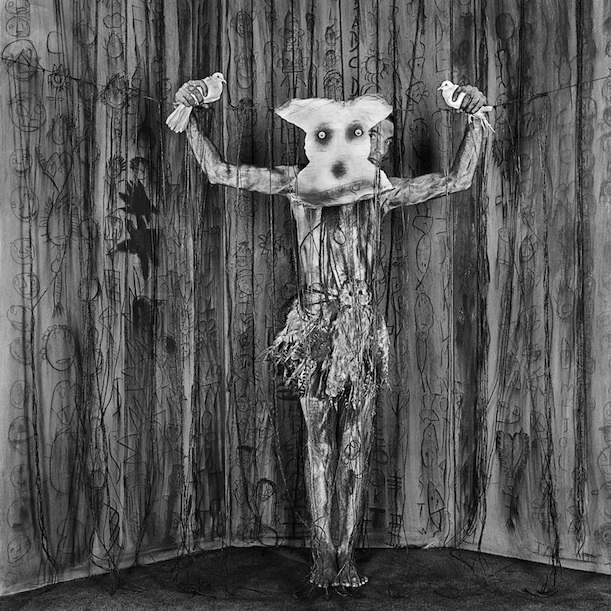
Roger Ballen’s inventive photographs rely on many other media, including drawing and sculpture, to create a new world. “Alter Ego.” From the Asylum series, 2010. Archival pigment print, Collection of the artist
Photography is said to be the truest representation of reality. The ability to capture still and moving image inspired artists to document life, rather than embellish it. Filmmaker Dziga Vertov inspired the genre cinéma vérité or truthful cinema. Today, photography maintains a special claim to objective truth alongside news stories. Rarely is the hand of the artist acknowledged in the making of a photograph.
But it’s everywhere in the work of New York-born, South Africa-based photographer Roger Ballen. A new exhibit at the African Art Museum, curated by fellow artist Craig Allen Subler, takes 55 works from Ballen’s nearly half-decade career shooting in black and white to illustrate the ways in which the artist has utilized the tools of drawing, namely mark-making and line, to create his unique aesthetic world.
Spanning from his early portraits to later, denser works that reference theater as much as photography, the exhibit, “Lines, Marks, and Drawings: Through the Lens of Roger Ballen,” shows just how thoroughly the concept of line infiltrates and structures his work across his entire career. Mangled hangers, clotheslines, stick figures drawn directly on the walls–the lines of Ballen’s photographs exist like totems, complete with their own psychic drama similar to Jackson Pollock’s early experiments with Jungian archetypes, or Pablo Picasso’s exploration of mythic figures like the minotaur. The exhibit moves roughly from portraiture to theater to a collaborative image-making that fuses the subject with line so completely that all that’s left is a peek of an arm or a disembodied head.

His Platteland series explores the interior spaces of rural South African homes. “Boy with Guns, Western Transvaal.” 1993.
The artist, who spent nearly a year hitchhiking from Cairo to Cape Town as a young man, is also a geologist who claims citizenship in what he sees as the last generation of photographers working with black and white film. Though he has lived in South Africa for more than 30 years, his work maintains an outsider art aesthetic. Interior shots in the homes of rural South Africans, from his Platteland series, seem to exist at the precise moment chaos turns to order and vice versa: live animals exist alongside their more domesticated toy counterparts, white walls that are otherwise unadorned have smeared handprints or childish doodles scrawled right on the surface and people are typically in some state of undress.
In South Africa, the aesthetic has reached a certain counter culture cache embodied in the idea of Zef. Taken from the Afrikaans word for “common,” zef’s unofficial ambassador is the band Die Antwoord, which collaborated with Ballen on its video “I Fink U Freeky,” also included in the museum’s exhibit.
“They told me when they first saw work that they stopped what they were doing for a year and went in a different direction,” says Ballen of the hip-hop-rave group who reached out to him to work on the video. He says their two styles organically fused and the whole video took only four and a half days to shoot.
When Ballen first saw the exhibit, he says it felt instantly right. “The exhibition is quite silent,” he says, pleased with the outcome. In fact, it’s almost eerily so. The aesthetic still hits just as hard when combined with the rambunctious music of Die Antwoord. Standing in the middle of the gallery space, surrounded by work from his entire career, Ballen says it’s exhilarating to confront himself, to look at what exactly has been guiding his work for so long. “It’s very gratifying,” he says. “Looking back at the work, you feel, well, at least I’ve preserved something through all those years. . .there is a line that runs through.”
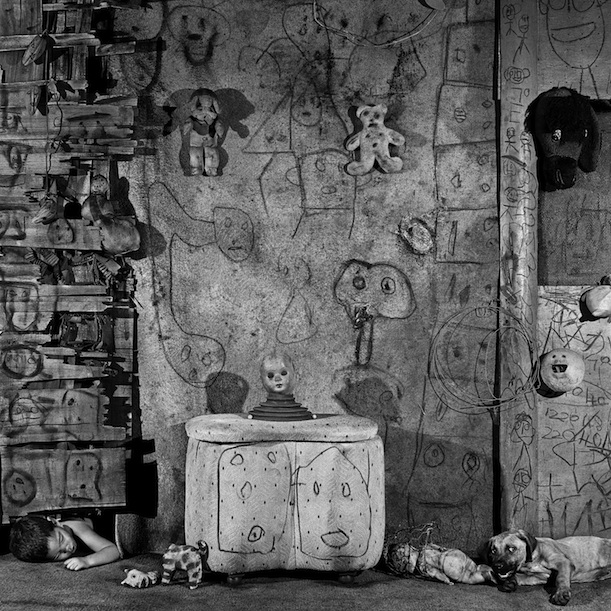
Ballen creates a single canvas out of a complicated arrangement in this photograph. “Boarding House.” From the Boarding House series, 2008. Archival pigment print, Collection of the artist
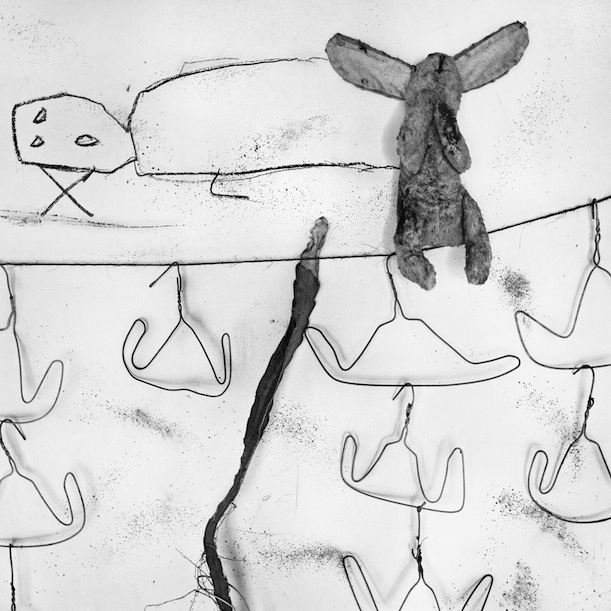
Twisted wire hangers transform into animated beings. “Washing Line.” From the Boarding House series, 2005. Silver gelatin print, Collection of the artist
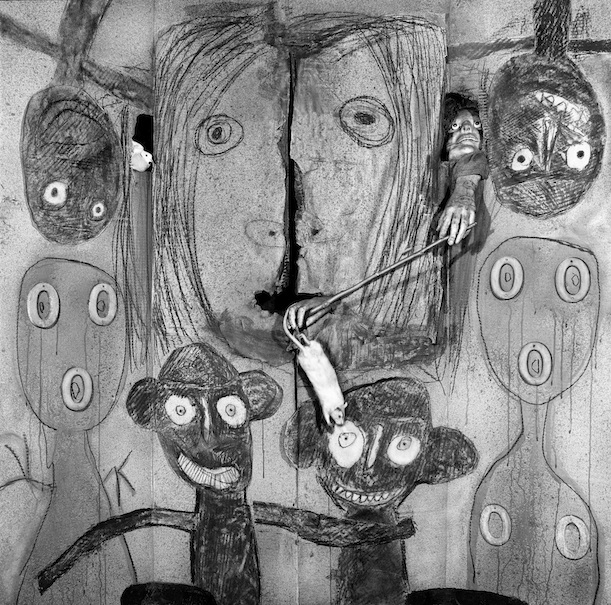
Two hands reach through. “Jump.” From the Asylum series, 2009. Archival pigment print, Collection of the artist
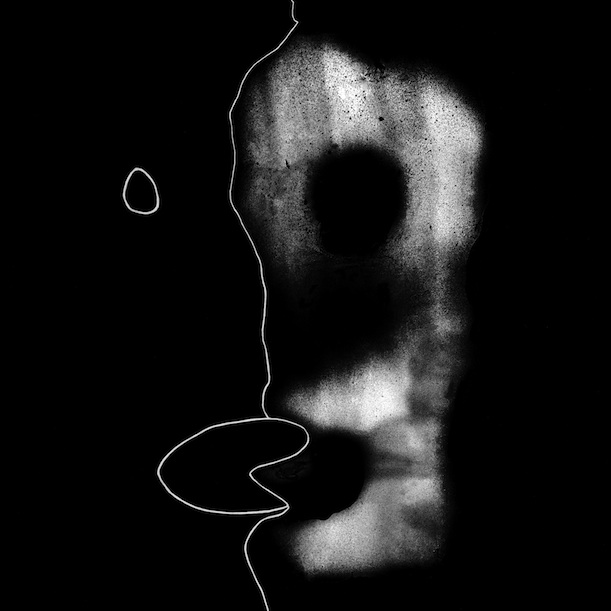
Ballen paints and draws directly on glass, illuminates it and then photographs it for his Apparitions series, creating what Subler calls glyphs. “Divided Self.” From the Apparitions series, 2007. Archival pigment print, Collection of the artist
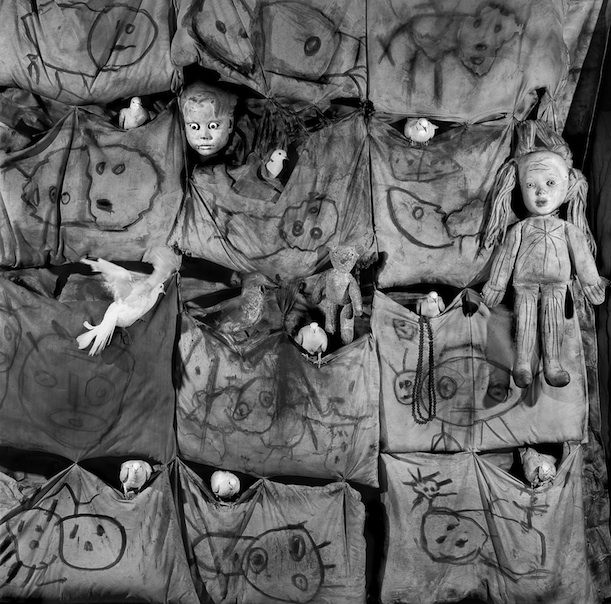
Bird imagery occurs throughout the Asylum series. “Nine Birds.” From the Asylum series, 2009. Archival pigment print, Collection of the artist
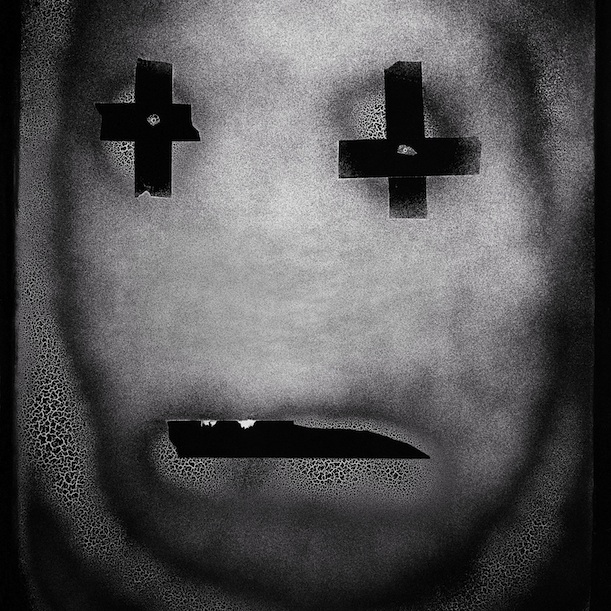
More from his series of work created on glass. “Injured.” From the Apparitions series, 2007. Archival pigment print, Collection of the artist

Ballen calls himself an organizer and his art an act of organization and capturing the decisive moment. “Banner.” From the Asylum series, 2009. Archival pigment print, Collection of the artist
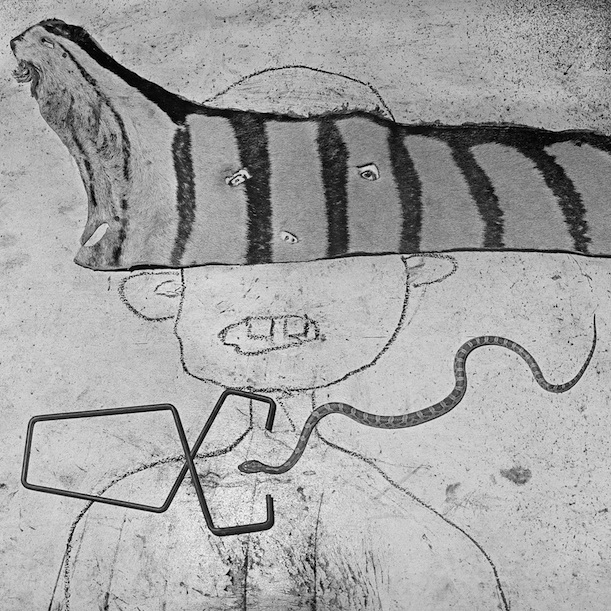
Lines on lines on lines. “Wiggle.” From the Boarding House series , 2007. Silver gelatin print, Collection the artist
“Lines, Marks, and Drawings: Through the Lens of Roger Ballen” is on view at the African Art Museum through February 9, 2014. Ballen will be at the museum Thursday, June 20, for an artist talk.
/https://tf-cmsv2-smithsonianmag-media.s3.amazonaws.com/accounts/headshot/Leah-Binkovitz-240.jpg)
/https://tf-cmsv2-smithsonianmag-media.s3.amazonaws.com/accounts/headshot/Leah-Binkovitz-240.jpg)